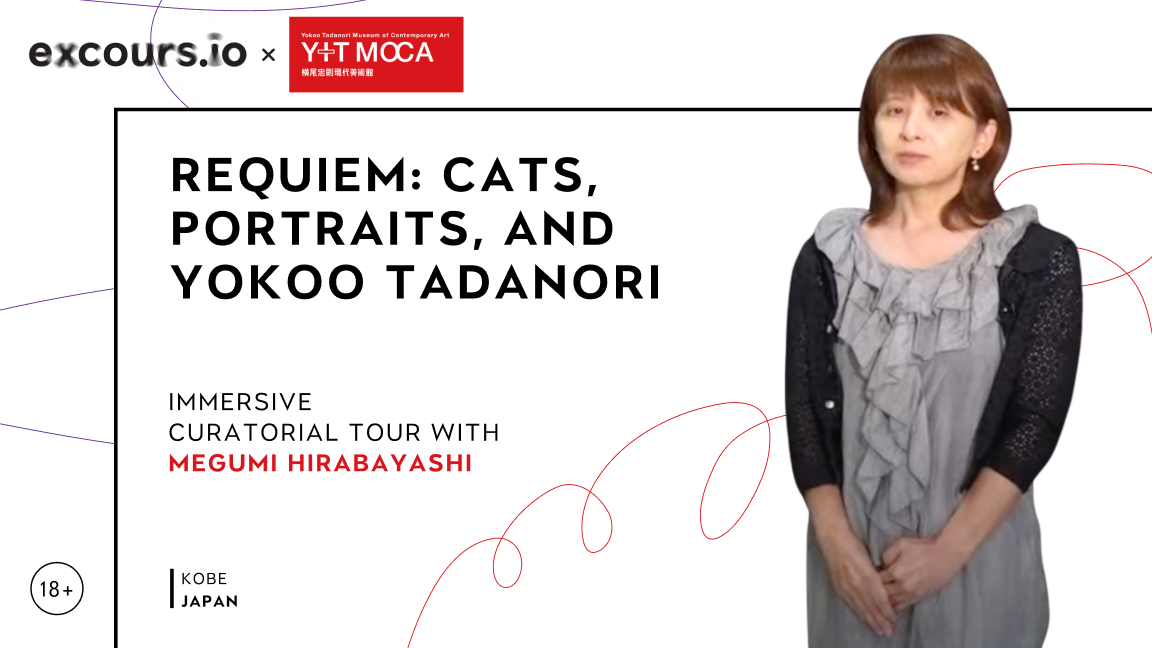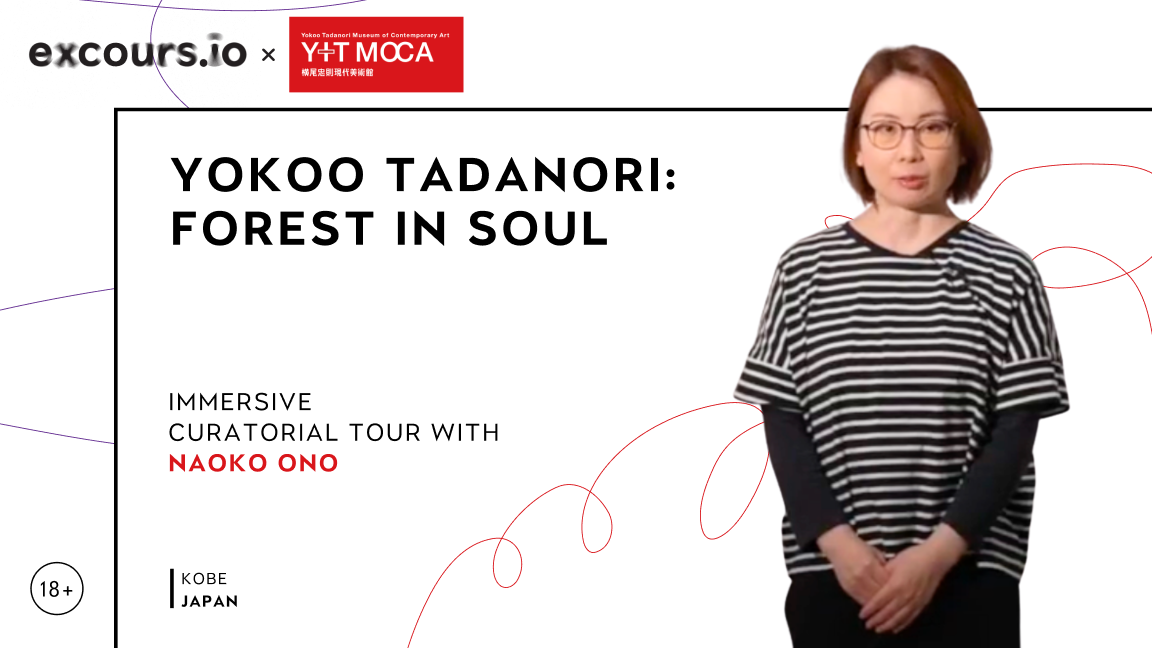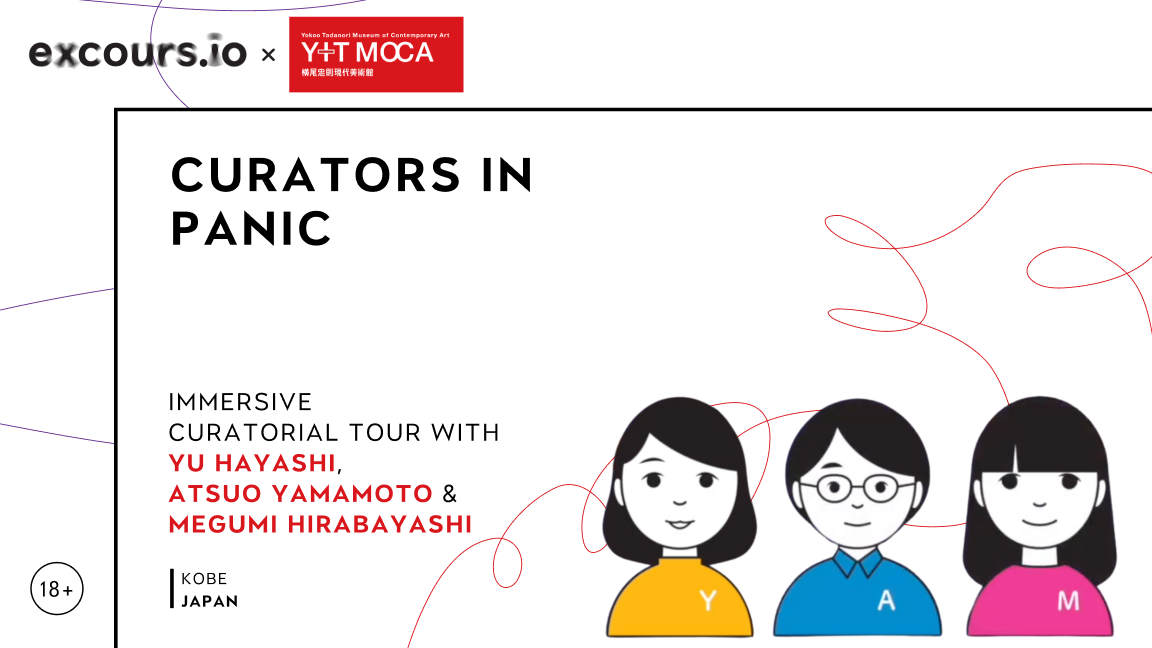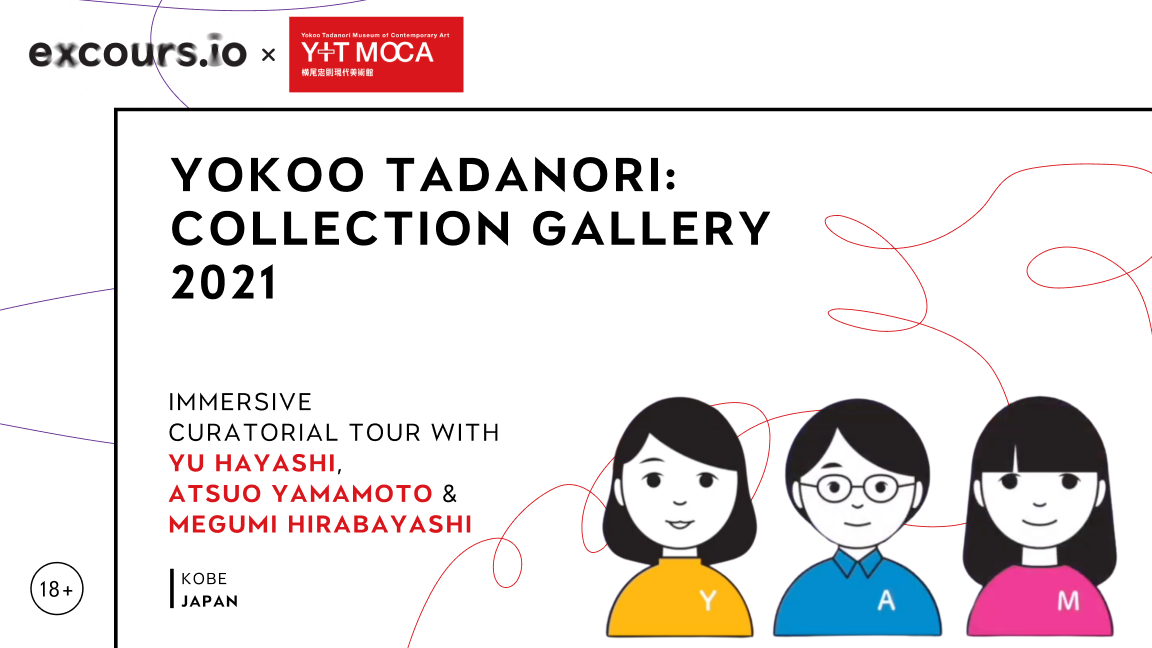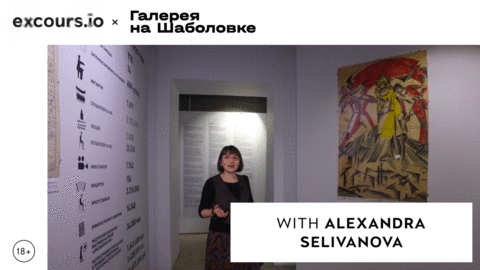Requiem: Cats, Portraits, and Yokoo Tadanori
Requiem: Cats, Portraits explores artist Yokoo Tadanori’s profound connections with departed friends, family, and beloved cats, tracing his influential career from the 1960s to the present. Born in 1936, Yokoo’s artistic journey has always been shaped by deep personal relationships and collaborative endeavors across various creative fields. The exhibition features portraits and personal statements, alongside items like the Tama, Come Home series, dedicated to his late cat. Visitors will also see examples of his enduring friendship with designer Issey Miyake, including iconic invitation designs from the 1970s onwards. This unique presentation invites viewers to reflect on how cherished relationships transcend time, influencing an artist’s vision and offering a glimpse into a timeless “Yokoo World.”
Why should you watch this?
The film Requiem: Cats, Portraits speaks to the need to keep memories alive in a time when loss touches many lives. Yokoo Tadanori’s portraits of friends, family, and his late cat Tama are not only records of affection but also reminders of how relationships shape creative vision. The display of Issey Miyake’s invitations alongside Yokoo’s drawings captures the energy of a friendship that spanned decades, showing how personal ties can fuel artistic innovation. Moving between private recollection and shared cultural history, the work invites viewers to consider how love, grief, and memory continue to shape the world we inhabit.
Yokoo Tadanori: Forest in Soul
Yokoo Tadanori: Forest in Soul brings to life the artist’s 2022 novel, Genkyo no mori, transforming its narrative into an immersive exhibition. Yokoo Tadanori, a renowned painter and writer, explores art and life through conversations with 280 departed souls. These figures, from celebrated artists like Pablo Picasso and Marcel Duchamp to personal acquaintances and his beloved cat Tama, profoundly shaped Yokoo’s artistic vision throughout his career. The exhibition’s forest-like setting visually embodies these dialogues, inviting visitors to wander through Yokoo’s imagined world. Guests will discover how timeless influences from diverse realms can inspire creativity, prompting reflection on the enduring connections between existence, artistry, and memory.
Why should you watch this?
Curators in Panic
The exhibition Curators in Panic addresses the unpredictable realities of operating a contemporary art museum, presenting unique works by artist Yokoo Tadanori, who has continuously redefined painting since the 1980s. Rooted in the early 2020s — a period marked by the coronavirus crisis and logistical demands from the large-scale retrospective Genkyo Yokoo Tadanori — this show responds directly to the sudden absence of major holdings and the challenges of museum governance. Three participating curators, deeply familiar with the collection, selected their personal favorites not included in the tour, highlighting the profound existence of the artist’s full creative output. This perspective reflects the confusion of managing a cultural facility during a state of emergency. By adopting the curators’ viewpoint, visitors gain an opportunity to freely enjoy the viewing experience and rediscover the rich, constantly changing creative world of Yokoo Tadanori.
Why should you watch this?
Curators in Panic speaks directly to the uncertainties of our present, when cultural institutions and everyday life alike are shaped by disruption and absence. The film captures the uneasy humor of curators calling their own exhibition a “state of emergency,” a phrase that resonates far beyond the museum walls in a world still negotiating the aftershocks of the coronavirus crisis. Their candid voices, recounting both discoveries and setbacks, turn curatorial practice into a deeply human story of resilience and adaptation. Viewers are left with a striking reminder that art, even when interrupted or displaced, continues to create meaning and connection.
Yokoo Tadanori Collection Gallery 2021
The Yokoo Tadanori Collection Gallery presents a comprehensive view of the artistic world and deep influences shaping the practice of Japanese artist Yokoo Tadanori. This permanent space, established in 2021 within the Yokoo Tadanori Museum of Contemporary Art in Hyogo Prefecture, Japan, displays his original drawings, color proofs, and project designs. The collection offers insight into the cultural and historical contexts that fed Yokoo’s aesthetic, illuminating the wider network of artistic references he engaged with. Visitors can study archive materials and works by figures he admired, such as Francis Picabia and Giorgio de Chirico, revealing the sources that informed his output. The gallery ultimately encourages visitors to recognize the enduring dialogue between personal vision and international creative lineage that defines lasting contemporary art.
Why should you watch this?
The Yokoo Tadanori Collection Gallery reveals the surprising connections between Yokoo’s imaginative designs and the works of artists he admired, such as Picabia and de Chirico, showing how ideas travel across time and place. Scenes capturing his bold color proofs alongside delicate sketches create moments of both delight and contemplation, exposing the processes behind visual invention. By following the intersections of personal creativity and broader artistic currents, the film invites viewers to experience the thrill of discovery and recognize how enduring inspiration emerges from unexpected juxtapositions, offering a vivid reminder of the vitality of art across generations.
Agitprop Trains
The exhibition delves into a groundbreaking aspect of Russian cultural history birthed from the revolution—mobile propaganda trains. These unique vehicles served as a fusion of art and technology, transforming into vibrant mobile platforms that combined exhibitions, theater, libraries, and cinema on wheels. Launched in 1918 under the directive of the All-Russian Central Executive Committee, these trains traversed vast distances, reaching from Odessa to Irkutsk and engaging communities with their painted exteriors and rich artistic content. Supervised by renowned graphic artist Ignatiy Nivinsky, the trains featured contributions from a diverse array of artists, blending Symbolism with early avant-garde ideas. This exhibition promises an in-depth exploration of their socio-political significance during the Civil War, showcasing archival photos, posters, and various artifacts that capture the ethos of an era where art became instrumental in uniting and inspiring a nation.
Why should you watch this?
Watching a guided tour of this exhibition is particularly essential in today’s context, as it illuminates the enduring power of art as a vehicle for social change and collective identity. In a world increasingly fractured by division and misinformation, the exhibition serves as a poignant reminder of how creative expression can be mobilized to unite communities and convey critical messages. As contemporary society grapples with its own political upheavals, understanding the historical context of these mobile propaganda trains reveals the importance of merging various forms of media and art to engage the public constructively. This tour not only highlights the innovative spirit of artists who contributed to the movement but also encourages dialogue about the role of culture in shaping our narratives and responding to social challenges.
“A” fell down, “B” is gone. Glossary of Soviet censorship. Censorship practices in the USSR from the first to the last day of the Soviet authorities
The exhibition serves as a poignant exploration of the pervasive and often absurd censorship that defined Soviet culture over 70 years. By navigating through the Russian alphabet—from the arrest of manuscripts to the Yauza tape recorder and the underground phenomenon of magnitizdat—visitors will uncover a narrative rich in both cruelty and resilience. Each letter unveils stories of meticulous scrutiny and cold repression, highlighting the complex interplay between censorship and state security, while also showcasing remarkable acts of civil defiance against artistic oppression. Enhanced by an array of documents, media, and artifacts, this exhibition invites you to explore the hidden layers of Soviet history and the power of creative expression that endeavored to resist the “red pencils” of authority.
Why should you watch this?
Being familiar with censorship practices is crucial in today’s increasingly polarized society, where issues of free speech and artistic expression are under threat globally. In an era marked by social media scrutiny, fake news, and governmental overreach, understanding the historical context of censorship serves as a stark reminder of the fragility of our rights and liberties. This exhibition resonates with contemporary struggles against misinformation, the suppression of dissent, and the erosion of trust in media and government institutions. By delving into the past, viewers gain insights into the tactics used to stifle voices and the importance of civil resistance. Thus, this tour becomes not just a historical observation, but a call to action, encouraging us to safeguard freedom of expression and advocate for a culture where diverse narratives can flourish without fear of repercussion in our modern landscape.
Haim Sokol. Testimony
Haim Sokol’s solo exhibition delves into the intricate interplay of memory and oblivion, offering a poignant exploration of individual narratives amidst historical upheaval. Blending documentary material with artistic expression, Sokol showcases a decade’s worth of work that includes videos in collaboration with migrant workers, a workshop dedicated to the art of protest, and a thought-provoking examination of “paper memory.” The exhibition features a rich tapestry of forms — drawings, performances, installations, and objects crafted from diverse materials such as metal, leather, and plastic — all converging around the central video installation “Testimony,” which poignantly recounts his father’s harrowing experiences in a ghetto during WWII. This compelling collection not only honors those marginalized in history but also ignites crucial conversations about identity, resilience, and the significance of personal testimonies in contemporary art.
Why should you watch this?
The guided tour provides a vital lens through which we can confront and reflect on pressing contemporary issues such as migration, displacement, and the struggle for recognition. In an era marked by increasing xenophobia and political polarization, Sokol’s exploration of marginalized voices and historical amnesia resonates deeply, urging us to confront our collective past and present. The guided tour offers insights that enrich our understanding of how memory shapes identity and informs socio-political discourse, making it particularly relevant as today’s world grapples with the consequences of both historical injustices and ongoing humanitarian crises. Engaging with Sokol’s work through a guided narrative not only enhances appreciation for the artistry involved but also emphasizes the urgency of empathy and awareness in combating societal erasure and advocating for the dignity of all individuals.
Maya Schweizer – Voices
Human perception of time often resembles a collage — fragmented and layered, shaped by memory and experience. Berlin-based artist Maya Schweizer captures this complexity through her unique language of short film. In her work, everyday spaces become carriers of memory, interweaving found footage, situational observations, and soundscapes to create immersive, multifaceted narratives. Schweizer’s art subtly explores the intricacies of cultural identity and the role individuals play as political actors, encouraging deeper reflection on how we engage with our surroundings and their embedded histories. In her solo exhibition Stimmen (Voices) at the Museum Villa Stuck, composed of 10 films spanning the past 14 years, Schweizer gives voice to those who have disappeared, recounting stories of violence, memory, and loss, particularly within the context of German history and Munich’s past. By blending personal and collective histories, her work oscillates between documentation and staged reality, using urban spaces as laboratories for examining overlapping historical layers. As viewers dive into the culture of remembrance, Schweizer uncovers new and often unsettling depths of human memory, sparking a reflection on the invisible ties between people, places, and their histories.
Why should you watch this?
KOMAR & MELAMID
KOMAR & MELAMID delves into the fusion of art and ideology, spotlighting the pioneering duo known for their satirical takes on Soviet culture. This exhibition showcases their innovative approach to ‘Sots Art,’ a movement that critiques the socialist aesthetic while playfully engaging with the political and commercial landscapes of the 20th century. Through a diverse array of works, including paintings, installations, and conceptual pieces, Komar and Melamid invite viewers to reconsider the purpose and function of art in society. Their collaboration challenges traditional boundaries, marrying humor with profound sociopolitical commentary—a must-see for anyone interested in contemporary art’s dialogue with history and culture.
Why should you watch this?
This exhibition represents the place where art meets incisive commentary on society and culture. This dynamic duo takes you on a journey through the playful yet poignant realm of Sots Art, characterized by a mix of humor and critique. Their works challenges normative ideals and question the role of art under Soviet influence, making it both a historical exploration and a contemporary dialogue. By engaging with their art, you’ll uncover layers of meaning about ideological constructs, consumerism, and identity. It’s a unique opportunity to reflect on how these themes continue to resonate today. Experience firsthand how Komar and Melamid’s innovative spirit invites a critical look at the world around us — ensuring you walk away with new insights and a deeper appreciation for the complexities of art.

